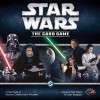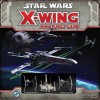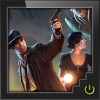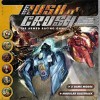profile badges
...
...
...
...
recent achievements

My First Heart
Show your loyalty for a game by clicking the "Heart" button on a game page.
Show your loyalty for a game by clicking the "Heart" button on a game page.
I'm a Real Person
Select an avatar via the edit profile page
Select an avatar via the edit profile page

I'm a Player!
Claim that you have played a game today by clicking the "Played Today!" button on a game page.
Claim that you have played a game today by clicking the "Played Today!" button on a game page.

Followed my first game
Follow a game by clicking "Follow" on the game page
Follow a game by clicking "Follow" on the game page






















Space Cadets
The crew sat alert at their stations, ready for the captain’s command. At his word, the awesome starship came to life, its engines alive, its systems primed and ready. Then it promptly flew into an asteroid field and collided with the edge of the universe. And with that, our doomed first game of Space Cadets got underway.
At first glance, Space Cadets looks like someone took a good look at a bunch of old board games in their collection and thought, “What can I do to re-use all of these?” It’s a co-op game wherein each player takes on the role of a different position in the crew of a starship, with a different mini-game to represent their responsibilities. So the Shields officer plays poker, the strength of their “hand” determining the strength of the shields. The Engineer basically plays Carcassonne, trying to match tiles in order to provide energy to the various departments. The captain plays Concentration in an effort to lock on with the ship’s tractor beam.
The twist here is that each position has 30 seconds in which to play their mini-game, with the fate of the ship in the balance. And nearly all the mini-games are played simultaneously, preceded by a brief planning period. It’s this timing element that gives Space Cadets its spark, and keeps it from simply being a hodgepodge of various game elements. All the games work together as well. If the Engineer doesn’t match the right tiles, some stations won’t have enough energy to be as effective as they could be. A successful lock from the Sensor position can make firing weapons easier. And a good turn at the Shields can make the Damage officer’s job a whole lot easier.
Damage repair is a harrowing process of drawing cards that are equal parts helpful and harmful, then having to make a successful repair roll based a range shown on the cards that allow repairs. Do enough damage to the ship, and you’re dealing with a core breach, which introduced yet another mini-game, a frenzied matching game where multiple players have to search a deck for the match to a card they’ve been dealt. Since this is done during the same 30-second turn in which all the other actions are performed, too many core breaches is a recipe for disaster.
But you’re not simply zipping around the galaxy trying to keep your ship pointed in the right direction and in one piece. There are alien spaceships to contend with, and a nemesis ship that is an unrelenting threat to the crew (and a neat way to keep the game moving forward, since dawdling too long means almost certain destruction at the hands of the nemesis).
There are also different scenarios included with the game, such as the one we played which involved exploring for rare crystals and capturing them with our tractor beam. Throw in various obstacles on the game board itself, such as gravity wells that affect your ship’s movement, and there’s plenty to keep players on their toes, on top of the frenetic rush of trying to properly man their stations.
Some of the mini-games are clearly easier than others. I was on Shields, and didn’t find the poker mechanic all that taxing. And our Weapons officer had little trouble with the Tetris-like component of the position required to arm the weapons. But actually firing the weapons — which entails flicking a wooden disc, similar to Pitch Car or Catacombs — proved a little more daunting. The game does offer a mechanic in the form of a damage card that forces players to change positions, so it’s possible to move from a game that isn’t your strongest suit to something more to your liking. But that also entails possibly moving a player away from a game at which they’re excelling. Since it was our first game, we played this effect as being optional, and most chose to stay put. There was some good-natured ribbing as some players had more success in their roles than others, but everyone had a great time, and it’s a game that could be enjoyed as easily by a bunch of avid gamers looking for something fun as it could at a family game night.
As much fun as we had, there were a couple of downsides though. The individual game boards are rather flimsy, a sort of paper stock as opposed to an actual hard board. The other components are pretty good quality, and I imagine thicker boards would have added to an already hefty price tag, but it was somewhat disappointing. Also, there does seem to be a bit of a snowball effect. Once things start going badly, it’s hard to recover, and a string of bad luck can doom your ship pretty quickly. Our Damage officer had some unlucky repair rolls that resulted in enough damage to the ship’s core that four of the six players could do nothing on their turn but try to repair the core breach. This led to the ship being unprepared for the next attack, which resulted in more damage, which resulted in even less efficiency. You can find yourself in an inevitable death spiral pretty quickly.
But the game really isn’t trying to be an exacting space sim. It just wants to be a fun, hectic race through the galaxy, and on that level, it succeeds. As our ship exploded into billions of molecules, every single one of us had a smile on our face.